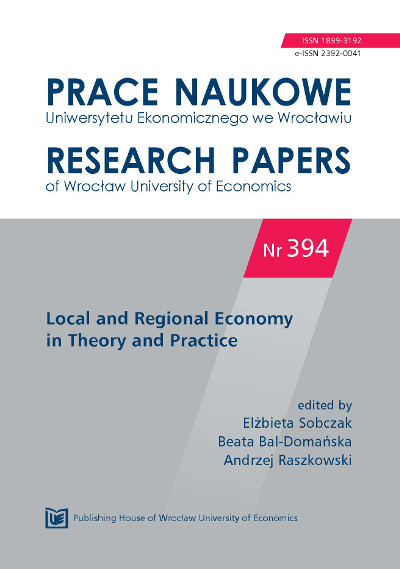Typology of low developed non-metropolitan sub-regions in the European Union
Typology of low developed non-metropolitan sub-regions in the European Union
Author(s): Jacek SołtysSubject(s): Economy
Published by: Wydawnictwo Uniwersytetu Ekonomicznego we Wrocławiu
Keywords: cluster analysis; European Union; non-metropolitan sub-regions; peripheral areas; typology
Summary/Abstract: This paper shows a typology of 319 NUTS-3 sub-regions in the European Union. The selected sub-regions are non-metropolitan sub-regions, whose gross domestic product per capita in 2011 was below 75% of the EU average. The objective of this typology was to recognize diversity in the examined sub-regions as a starting point for the selection of areas for future comparative research. The typology takes into account 24 variables related to the state and dynamics of socioeconomic development, demography, the functional structure of a sub-regions’ economies and population density. Two methods applied to carry out the research were: Principal Component Analysis (PCA) and cluster analysis, which works using the k-means algorithm for grouping sub-regions into types. The last part of the paper presents characteristics of each type, characteristics of overall result by states and listing of type membership. In a similar typology previously prepared by the author, six types of sub-regions revealed national specifics that caused the difficulty of selecting sub-regions for international comparison. In contrast, the new typology described in this paper is based on four types and includes more sub-regions from more countries in each type.
Journal: Prace Naukowe Uniwersytetu Ekonomicznego we Wrocławiu
- Issue Year: 2015
- Issue No: 394
- Page Range: 153-165
- Page Count: 13

